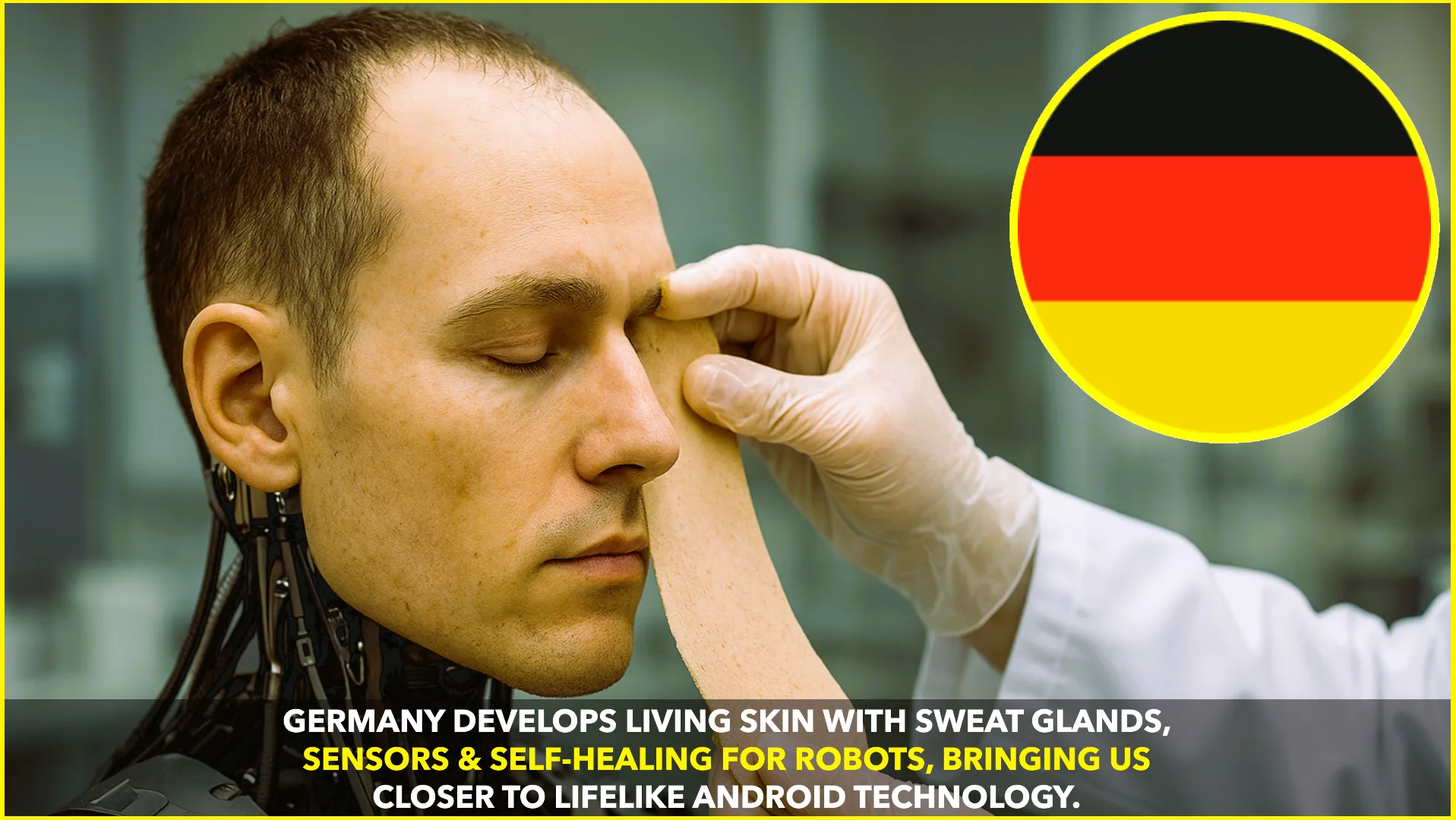Germany has taken a bold step toward the future of robotics with the creation of bioengineered living skin made from laboratory-grown human cells. This pioneering development, achieved by scientists at the Max Planck Institute for Intelligent Systems, could transform how machines interact with their surroundings and the people who use them.
Unlike synthetic coverings, this living skin mimics the natural properties of human tissue, including sweat glands, hair follicles, and nerve-like sensors. This means robots covered with this material would not only look more lifelike but also gain an enhanced ability to sense pressure, temperature, and touch. Remarkably, the skin can also self-heal minor cuts and tears, something never before possible in robotic design.
A Leap Beyond Artificial Materials
Until now, robotics has heavily relied on artificial coverings made from silicone, polymers, or synthetic composites. These materials provide durability and flexibility but lack the responsiveness and natural behavior of real skin. The newly developed living skin, however, bridges this gap by incorporating biological functions.
The skin’s ability to sweat is not just cosmetic—it plays a role in regulating temperature, an essential feature for robots that might be deployed in environments where overheating is a risk. Its nerve-mimicking sensors also give robots the power to detect changes in pressure and heat, much like human skin. This could prove invaluable in scenarios where delicate handling is required, such as healthcare or caregiving.
How It Was Made
Researchers at the Max Planck Institute used advanced 3D bioprinting techniques to cultivate patches of skin in the laboratory. These patches are grown using a combination of fibroblasts and keratinocytes—two primary cell types found in human skin.
By layering the cells in a way that mirrors natural skin growth, the team was able to produce tissue that functions similarly to the human body’s largest organ. Over time, this skin also develops pores for sweat glands and even hair-like structures that enhance sensory detection.
Once cultivated, the skin patches can be applied to robotic surfaces, adapting to their shape and movement. The bioengineered skin bonds seamlessly to the machine, offering a natural appearance and remarkable flexibility.
Self-Healing: A Game-Changing Feature
One of the most exciting aspects of this breakthrough is the skin’s ability to self-repair. Minor tears or punctures trigger the cells to close the wound, just like in human skin. This feature dramatically increases the durability of robots, reducing the need for maintenance and making them more practical for long-term use.
Applications Across Industries
The implications of this innovation are vast. In healthcare, robots with living skin could assist patients in more natural and sensitive ways, such as providing physical therapy or helping the elderly. In prosthetics, artificial limbs covered in this bioengineered material would not only appear more lifelike but also provide sensory feedback, greatly improving the user experience.
In hazardous environments, such as disaster zones, robots equipped with this skin could operate with greater resilience. Their ability to detect temperature changes or pressure differences could be critical in saving lives.
A Step Toward Lifelike Androids
While the technology is still in its early stages, the creation of living skin for robots brings humanity closer to developing androids that are almost indistinguishable from humans. Ethical questions will inevitably arise as machines become more lifelike, but the practical benefits cannot be ignored.
According to the researchers, this bioengineered skin is not meant to replace humans but to enhance the way robots support people. By merging bioengineering and robotics, the project highlights the future of machines that can sense and adapt—not just function mechanically.
Looking Ahead
The team at the Max Planck Institute plans to refine the technology further, focusing on improving long-term durability and integration with robotic systems. They are also exploring the possibility of embedding more advanced sensory networks, making the skin even more responsive to environmental cues.
As robotics continues to evolve, this breakthrough in living skin may be remembered as a milestone—a point where machines stopped being just tools and started becoming interactive companions capable of understanding and responding to the world in a human-like way.










